For many South Koreans, the former presidential palace in Seoul was a little-visited, heavily secured mountainside landmark. That has now changed as thousands of people have been allowed a look inside for the first time in 74 years.
As one of his first acts, the new South Korean leader has moved the presidential offices from the Blue House, named after its distinctive blue roof tiles, and opened its gates to the public, allowing a maximum of 39,000 people a day to visit.
The normally serious compound has been transformed into something like a fair, with excited crowds looking around and standing in long lines.
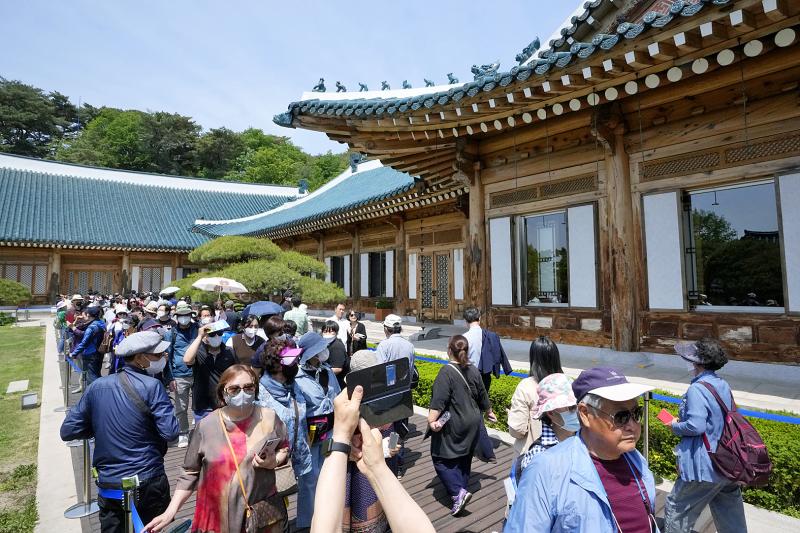
Photo: AP
“I feel grateful that the Blue House has opened to the public,” 61-year-old office worker Lee Sang-woon said during a tour with his family. “I am really happy to be here.”
The Blue House has gone through multiple transformations. Once the site of a royal garden, the Japanese built the official residence for their governors-general there during Tokyo’s colonial rule of the Korean Peninsula.
After Korea was liberated from Japan in 1945, the US military commander occupied the palace until it became South Korea’s official presidential office and residence upon the country’s foundation in 1948.
The Blue House opening is part of South Korean President Yoon Suk-yeol’s pledge to abandon the palace and establish his offices at a South Korean Ministry of Defense compound in Yongsan District, about 5km away.
Yoon said he chose the compound because it is already equipped with security-related command facilities.
He said he aims to build something similar to the White House in Washington that would let people have a closer look at the building over a fence.
Yoon said that the new offices would allow for better communication with the public.
However, his relocation plans have faced complaints that they were rushed and unrealistic.
Critics say that a hasty movement of top government offices could undermine national security by concentrating too much power in one place, cost too much and contravene the property rights of people living in the area.
Former South Korean president Moon Jae-in also expressed worries that Yoon made his decision before hearing enough public opinion.
When Moon took office in 2017, he also pledged to move out in a bid to distance himself from former South Korean president Park Geun-hye, his predecessor who was impeached and jailed on corruption charges.
Moon eventually abandoned his plan, while Park was pardoned late last year.
However, Yoon started his first day earlier this month as president in Yongsan, and the former presidential office was opened to the public on the same day.
Choi Jun-chae, 60, who runs a mill at a traditional market near the Blue House, was sorry to see the presidential office leave his neighborhood, but also hopeful that the relocation would boost local businesses by bringing in more tourists.
“Under the [former South Korean president] Lee Myung-bak administration, there were lots of protests ... so it was really hard to commute to this area,” Choi said. “Cars couldn’t move, so I had to walk.”
Thousands of people have gathered near the Blue House in the past for mass rallies and marches. Nearby residents said they faced traffic congestion and noise.
“I hope that protests decrease and more people visit the area,” said Yoo Sung-jong, head of a bakery in the neighborhood. “However, [the president] was here for a long time, so it is a bit sad, too.”
While some people in the new presidential neighborhood expect an improvement because of the new offices, there are also worries.
“As for traffic issues, I can already see more people visiting here. It will be very crowded and complicated at first, but I think it will gradually get better,” said Kim Jung-taek, a gallery owner near the new presidential offices.
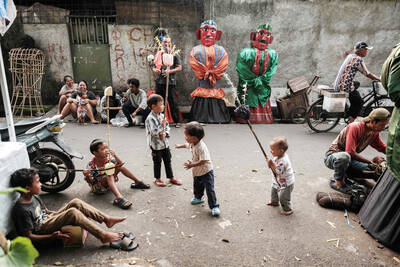
In the sweltering streets of Jakarta, buskers carry towering, hollow puppets and pass around a bucket for donations. Now, they fear becoming outlaws. City authorities said they would crack down on use of the sacred ondel-ondel puppets, which can stand as tall as a truck, and they are drafting legislation to remove what they view as a street nuisance. Performances featuring the puppets — originally used by Jakarta’s Betawi people to ward off evil spirits — would be allowed only at set events. The ban could leave many ondel-ondel buskers in Jakarta jobless. “I am confused and anxious. I fear getting raided or even
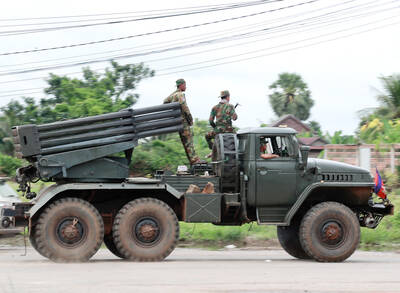
POLITICAL PATRIARCHS: Recent clashes between Thailand and Cambodia are driven by an escalating feud between rival political families, analysts say The dispute over Thailand and Cambodia’s contested border, which dates back more than a century to disagreements over colonial-era maps, has broken into conflict before. However, the most recent clashes, which erupted on Thursday, have been fueled by another factor: a bitter feud between two powerful political patriarchs. Cambodian Senate President and former prime minister Hun Sen, 72, and former Thai prime minister Thaksin Shinawatra, 76, were once such close friends that they reportedly called one another brothers. Hun Sen has, over the years, supported Thaksin’s family during their long-running power struggle with Thailand’s military. Thaksin and his sister Yingluck stayed
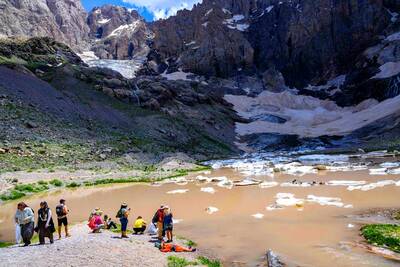
Kemal Ozdemir looked up at the bare peaks of Mount Cilo in Turkey’s Kurdish majority southeast. “There were glaciers 10 years ago,” he recalled under a cloudless sky. A mountain guide for 15 years, Ozdemir then turned toward the torrent carrying dozens of blocks of ice below a slope covered with grass and rocks — a sign of glacier loss being exacerbated by global warming. “You can see that there are quite a few pieces of glacier in the water right now ... the reason why the waterfalls flow lushly actually shows us how fast the ice is melting,” he said.
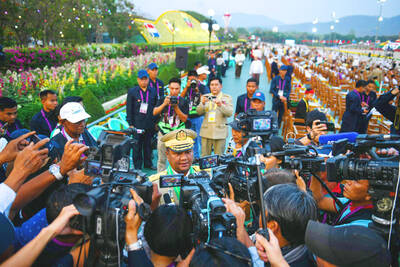
RESTRUCTURE: Myanmar’s military has ended emergency rule and announced plans for elections in December, but critics said the move aims to entrench junta control Myanmar’s military government announced on Thursday that it was ending the state of emergency declared after it seized power in 2021 and would restructure administrative bodies to prepare for the new election at the end of the year. However, the polls planned for an unspecified date in December face serious obstacles, including a civil war raging over most of the country and pledges by opponents of the military rule to derail the election because they believe it can be neither free nor fair. Under the restructuring, Myanmar’s junta chief Min Aung Hlaing is giving up two posts, but would stay at the